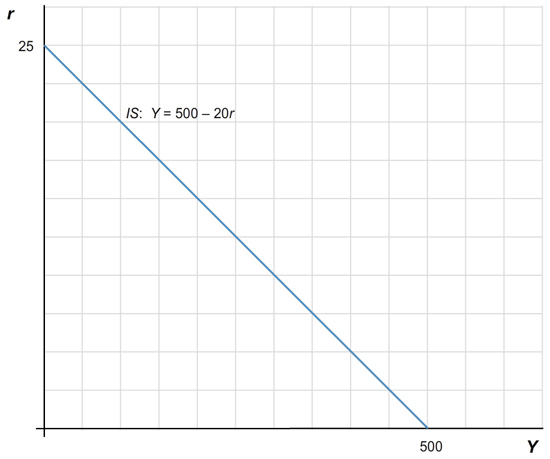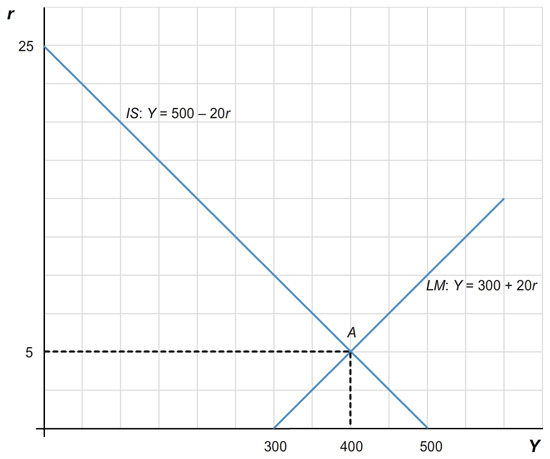Question 1 of 2
Step 1
The following equations describe an economy.
Y = C + I + G.
C = 120 + 0.5 (Y – T).
I = 100 – 10 r.
(M/P)d = Y – 20r.
G = 50.
T = 40.
M = 600.
P = 2.
From the above list, use the relevant set of equations to derive the IS curve.
IS: _____________

- Chapters
- descriptions off, selected
- captions settings, opens captions settings dialog
- captions off, selected
This is a modal window.
Beginning of dialog window. Escape will cancel and close the window.
End of dialog window.
This is a modal window. This modal can be closed by pressing the Escape key or activating the close button.
This is a modal window.
Step 2
The following equations describe an economy.
Y = C + I + G.
C = 120 + 0.5 (Y – T).
I = 100 – 10 r.
(M/P)d = Y – 20r.
G = 50.
T = 40.
M = 600.
P = 2.
From the above list, use the relevant set of equations to derive the LM curve. What are the equilibrium level of income and the equilibrium interest rate?
LM: ________
The equilibrium level of income, Y, is , and the equilibrium interest rate, r, is %.

- Chapters
- descriptions off, selected
- captions settings, opens captions settings dialog
- captions off, selected
This is a modal window.
Beginning of dialog window. Escape will cancel and close the window.
End of dialog window.
This is a modal window. This modal can be closed by pressing the Escape key or activating the close button.
This is a modal window.